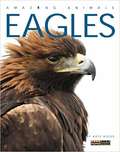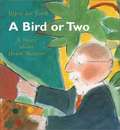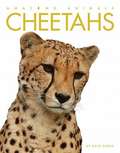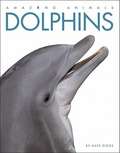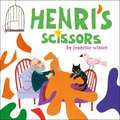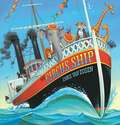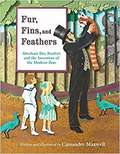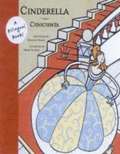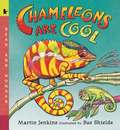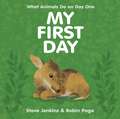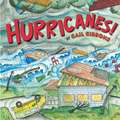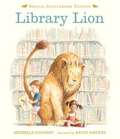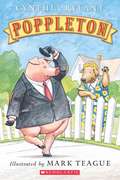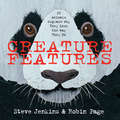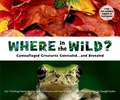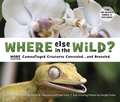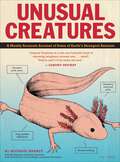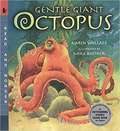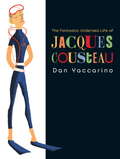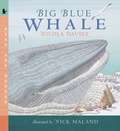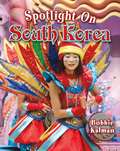Special Collections
District List: BCPS Supplemental Texts - Grade 1
Description: Baltimore City Public Schools Supplemental Text List for students in 1st Grade. #bcps
- Table View
- List View
Eagles
by Kate RiggsThis popular series continues traveling the planet to study alligators, bats, and other fascinating animals. Beautiful photos are paired with accessible text to examine the featured creature's appearance, habitat, behaviors, and life cycle.
A Bird or Two
by Bijou Le TordSimple text and bright illustrations describe the work of French painter, Henri Matisse, particularly his joyful use of color.
Cheetahs
by Kate RiggsFrom fleet-footed cheetahs to howling wolves, and from playful dolphins to earth-shaking elephants, the world of animals is wonderfully diverse. This popular and newly expanded series continues traveling the planet to study these and other fascinating animals. Beautiful photos are paired with accessible text to examine the featured animal's appearance, behaviors, and life cycle. Each book also presents a folk story that helps explain a defining feature or behavior.
Dolphins
by Kate RiggsFrom fleet-footed cheetahs to howling wolves, and from playful dolphins to earth-shaking elephants, the world of animals is wonderfully diverse. This popular and newly expanded series continues traveling the planet to study these and other fascinating animals.
Beautiful photos are paired with accessible text to examine the featured animal's appearance, behaviors, and life cycle. Each book also presents a folk story that helps explain a defining feature or behavior.
Henri's Scissors
by Jeanette WinterIn a small weaving town in France, a young boy named Henri-Emile Matisse drew pictures everywhere, and when he grew up, he moved to Paris and became a famous artist who created paintings that were adored around the world. But late in life a serious illness confined him to a wheelchair, and amazingly, it was from there that he created among his most beloved works—enormous and breathtaking paper cutouts.
Based on the life of Henri Matisse, this moving and inspirational picture book biography includes a note from the author, dynamic quotes from Matisse himself, and an illuminating look at a little-known part of a great artist’s creative process.
The Circus Ship
by Chris Van DusenWhen a circus ship runs aground off the coast of Maine, the poor animals are left on their own to swim the chilly waters. Staggering onto a nearby island, they soon win over the wary townspeople with their kind, courageous ways. So well do the critters blend in that when the greedy circus owner returns to claim them, villagers of all species conspire to outsmart the bloated blowhard. With buoyant rhymes and brilliantly caricatured illustrations evoking the early nineteenth century, Chris Van Dusen presents a hugely entertaining tale about the bonds of community — and a rare hidden-pictures spread for eagle-eyed readers of all ages.
Fins Furs and Feathers
by Cassandre MaxwellAbraham Dee Bartlett knew from a young age that he wanted to spend his life working with animals. But in Victorian London, there weren’t many jobs that provided an opportunity to do that. Still, Abraham spent years gaining knowledge and pursuing his dream until he eventually became superintendent in the London Zoo. Driven by his compassion for the animals, Abraham dramatically improved the conditions of the zoo to ensure that the animals could be happy and healthy. With engaging back matter and charming illustrations, Cassandre Maxwell’s book brings to life the little-known story of the man who helped to create the modern zoo.
Cinderella/Cenicienta
by Francesc Boada and Monse Fransoy and James SurgesStriking art gives this classic fairy tale a fresh look that will enchant a new generation of readers. Retold in both Spanish and English, this universally familiar story is now a springboard to inspire readers to recognize words in both languages. The dual-language text makes this book a useful and beautiful addition to both home and classroom libraries.
Chameleons Are Cool
by Martin Jenkins and Sue ShieldsTheir eyes may be big and bulgy, their noses a little ridiculous and, yes, they are rather grumpy. But chameleons are cool With this informative book children can check out these pocket-sized, swivel-eyed, long-tongued sharp-shooters.
My First Day
by Steve Jenkins and Robin PageThe first day of life is different for every animal. Human newborns don't do much at all, but some animals hit the ground running. The Caldecott Honor-winning team Steve Jenkins and Robin Page apply their considerable talents to revealing how twenty two different species, from the emperor penguin to the Siberian tiger, adapt to that traumatic first few hours of life, with or without parental help. Jenkins's vividly colorful cut-paper illustrations are eye-poppingly three-dimensional and as exquisite as ever. While the text is short and sweet, an illustrated guide provides descriptions of the twenty two animals in the back. Fantastic!
Hurricanes!
by Gail GibbonsThis best-selling introduction to the most powerful storms in the world explains how and where hurricanes form. Readers will also learn how hurricanes cause damage, how they are named, and how hurricane strength is assessed from Category 1 to Category 5. The book uses major hurricanes through history as examples--from Galveston in 1900 to Katrina in 2005--and explains how to prepare for a hurricane. A fascinating science book for younger kids interested in understanding weather, storms and natural disasters, Hurricanes! provides straight-forward explanations to the complex facts behind these massive storms--without being too scary. One of the world's most trusted children's nonfiction author-illustrators, Gail Gibbons' signature combination of bold, clear art and detailed, accessible descriptions creates an invaluable resource for young readers seeking to learn more about the world.
Library Lion
by Michelle KnudsenAn affectionate storybook tribute to that truly wonderful place: the library. Miss Merriweather, the head librarian, is very particular about rules in the library. No running allowed. And you must be quiet. But when a lion comes to the library one day, no one is sure what to do. There aren't any rules about lions in the library. And, as it turns out, this lion seems very well suited to library visiting. His big feet are quiet on the library floor. He makes a comfy backrest for the children at story hour. And he never roars in the library, at least not anymore. But when something terrible happens, the lion quickly comes to the rescue in the only way he knows how. Michelle Knudsen's disarming story, illustrated by the matchless Kevin Hawkes in an expressive timeless style, will win over even the most ardent of rule keepers. From the Hardcover edition.
Rain School
by James RumfordIt is the first day of school in Chad, Africa. Children are filling the road. "Will they give us a notebook?" Thomas asks. "Will they give us a pencil?” "Will I learn to read?" But when he and the other children arrive at the schoolyard, they find no classroom, no desks. Just a teacher. "We will build our school," she says. "This is our first lesson. " James Rumford, who lived in Chad as a Peace Corps volunteer, fills these pages with the vibrant colors of Africa and the spare words of a poet to show how important learning is in a country where only a few children are able to go to school.
Poppleton
by Cynthia RylantPoppleton the pig makes a friend, reads a library book about adventure, and helps a sick friend get better.
Lexile Measure: 370L
Creature Features
by Steve Jenkins and Robin PageDear axolotl: Why do you have feathers growing out of your head? Axolotl: They aren't feathers—they're gills! They let me breathe underwater. Let's face it. Even as babies, we humans pay close attention to faces. Observing another person's features and expressions tells us whether they are happy, angry, excited, or sad. And when we look at an animal, it's hard not to imagine that its face is communicating human feelings. This isn't true, of course. Squinty eyes, an upturned mouth, or another odd expression is probably there because, in some way, it helps that animal survive. Packed with many cool facts and visuals on where certain animals live and what they eat, this book captures twenty-five humorous—and very true—explanations of why animals look the way they do in order to exist in this world.
Where in the Wild?
by David M. Schwartz and Yael Schy and Dwight KuhnTen creatures await, camouflaged in artful, full-page photographs, while playful poems offer clues about each animal's identity and whereabouts. Think you've spotted one? Lift one of ten gatefolds to find out. A full page of fascinating information accompanies each animal so readers can learn how nature's camouflage serves hunter and hunted alike. Why do fawns have spots during their first year of life? How did killdeer birds get their name? What makes a crab spider so good at ambushing its prey? Recipient of the 2008 American Association for the Advancement of Science/Subaru Science Book and Films Prize for Excellence in Science Books. Named a 2008 Outstanding Science Trade Books for Students K-12 by the National Science Teachers Association (NSTA) and the Children's Book Council (CBC) Editor's Choice, 2007-- Booklist magazine Listed in "Lasting Connections of 2007," an annual roundup of the year's best books to tie into curriculum. -Book Links magazine
Where Else In The Wild?
by David M. Schwartz and Yael Schy and Dwight KuhnDid you find that sneaky orchid mantis hiding on the cover? This book is full of similarly sly species-and they're all hiding in plain sight. Think you've spotted one?
Lift the flap to find out Each of the camouflaged creatures on these pages, from chickadees to crayfish, is disguised for a reason.Some are on the prowl for prey, while others hide from hungry predators. Discover why geckos have a spooky reputation; why it pays for a mouse to have a dark-colored back and light-colored belly; and why you wouldn't want to be fooled by a scorpion fish.
In this follow-up to the acclaimed Where in the Wild?, David Schwartz, Yael Schy, and Dwight Kuhn take readers on another remarkable tour through the fascinating world of animal camouflage.
Surprising Sharks
by Nicola Davies and James CroftThis vibrant new book-and-CD series brings the best of our Read and Wonder nature stories to life. Each paperback title in the series includes a CD that features: - an engaging read-aloud with sound effects - a segment focusing on fascinating facts - a read-along opportunity guided by prompts A compelling narrative, captivating facts, and colorful illustrations make for a surprising book about sharks that kids can really sink their teeth into.
Unusual Creatures
by Michael Hearst and Christie Wright and Arjen Noordeman and Jelmer NoordemanWith humor and flair, Michael Hearst introduces the reader to a wealth of extraordinary life-forms. Which animal can be found at the top of Mount Everest, 10,000 feet under the sea, and in your backyard? Which animal poops cubes? Which animal can disguise itself as a giant crab? These fascinating facts and hundreds more await curious minds, amateur zoologists, and anyone who has ever laughed at a funny-looking animal.This book is also available in a multi-touch version, which is specially formatted for the iPad.
Starfish
by Edith T. HurdStarfish have arms, but no legs. They have feet, but no toes. When starfish get hungry, they slide, glide, and feel their way in search of something to eat. Starfish aren't fish, but they are living animals. Learn how starfish move, eat, and grow in Edith Hurd's poetic text. Read and find out all about starfish, the stars of the sea.
Gentle Giant Octopus
by Karen Wallace and Mike BostockFollow a goggle-eyed octopus as she jets through the shadows, tentacles flying behind her. Finally she finds a well-hidden den in which to lay her eggs, which will dangle from the roof like grapes on a string. In silky verse, Karen Wallace explores the mysterious world of the octopus, while Mike Bostock’s flowing illustrations bring that world vividly to life. Back matter includes an afterword, resources for further information, a glossary, and an index.
The Fantastic Undersea Life of Jacques Cousteau
by Dan YaccarinoJacques Cousteau was the world's ambassador of the oceans. His popular TV series brought whales, otters, and dolphins right into people's living rooms. Now, in this exciting picturebook biography, Dan Yaccarino introduces young readers to the man behind the snorkel.From the first moment he got a glimpse of what lived under the ocean's waves, Cousteau was hooked. And so he set sail aboard the Calypso to see the sea. He and his team of scientists invented diving equipment and waterproof cameras. They made films and televisions shows and wrote books so they could share what they learned. The oceans were a vast unexplored world, and Cousteau became our guide. And when he saw that pollution was taking its toll on the seas, Cousteau became our guide in how to protect the oceans as well.
Big Blue Whale (Read and Wonder)
by Nicola Davies and Nick MalandA great resource for teachers! Read and Wonder books tell stories, take children on adventures, and reveal how big and WONDER-full the natural world really is.
Biggest, Strongest, Fastest
by Steve JenkinsAn informative introduction to the "world records" held by fourteen members of the animal kingdom. Each spread portrays an animal that is the largest, slowest, longest lived.
Spotlight on South Korea
by Bobbie KalmanSpotlight on South Korea introduces children to the country of South Korea in Asia, whose nearest neighbors are China, Japan, and North Korea. South Korea is mostly mountainous, and there are about 3,000 islands off its coasts. Most South Koreans have moved from the countryside to the cities, especially it's capital Seoul, the country's largest city. Young readers will learn about South Korea's history, the daily life of Koreans, as well as about Korean festivals and culture.
